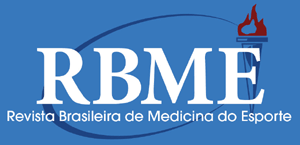PROPÓSITOS: Comparar diferentes métodos de avaliação da composição corporal em mulheres com sobrepeso e obesas sedentárias submetidas a dois meses de treinamento em circuito (CIRC), ou caminhada (CAM) e associar o desempenho físico à 'muscularidade', calculada por esses métodos. MÉTODOS: Grupos: CIRC, n = 14, índice de massa corporal (IMC, kg/m²) = 32 ± 8 (média ± DP); idade = 34 ± 10 (anos); e CAM, n = 12, IMC = 30 ± 3; idade = 38 ± 11. Treinamento: 60min x 3d/semana no primeiro mês e 60min x 4d/semana no segundo. Avaliação da composição corporal: antropometria(1,2), bioimpedância(3) e somatotipia(4). Testes de uma repetição máxima (1-RM) para supino reto, leg press e remada baixa sentada. RESULTADOS: A massa, o IMC, a percentagem da gordura corporal pela antropometria e bioimpedância e a endomorfia foram reduzidas significativamente nos dois grupos. A mesomorfia diminuiu e a ectomorfia aumentou no CAM. As massas magra da bioimpedância e muscular não mudaram em ambos os grupos. A circunferência muscular do braço (CMB) aumentou significativamente no CIRC. O resultado da percentagem de gordura da bioimpedância e o da antropometria foram iguais e significativamente correlacionados. A endomorfia foi significativamente correlacionada com o percentual de gordura da antropometria e a mesomorfia com a da massa magra da antropometria. A ectomorfia não se correlacionou com a massa magra da antropometria. CONCLUSÃO: A somatotipia teve bom resultado para avaliar as modificações fenotípicas dessas mulheres. Todavia, a endomorfia apresentou melhor concordância e a ectomorfia, a pior, comparada com outros métodos. Os resultados do somatótipo sugerem que o CIRC obteve melhor resultado. A bioimpedância e a antropometria produzem resultados similares para avaliar a composição corporal.
Endomorfia; Mesomorfia; Ectomorfia; Bioimpedância; 1-RM





